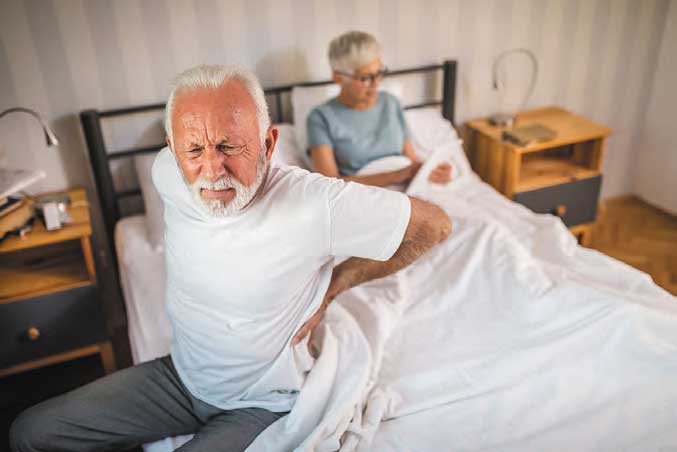
80% of US population will experience one or more episodes of low back pain during their lifetime. By 2050, 40 percent of the population will be older than 50. This growing age group will have a substantial impact on healthcare in the coming decades. As older adults have a greater susceptibility to chronic low back pain, the physical and psychological impact of this pain on society will be considerable. Improper body mechanics (such as improperly lifting heavy items) can put increased pressure on your spine. This may lead to the degeneration of discs, back pain, and other spinal problems. These statistics put into perspective the importance of protecting the spine and reducing the incidences of low back pain in older adults. Many back injuries could be prevented by using appropriate body mechanics during daily activities.

As an example, when lifting objects, you should set your trunk muscles to immobilize your spine, and then the arms and legs can do the lifting. It is important to keep a straight back with the pelvis as this will keep your center of gravity over your base of support. When lifting an object, keep your feet apart for a wide base of support. This broadens your base of support making it easier to maintain your balance while lifting. You should also lift with your knees. This lowers your center of gravity and helps you to use your quadriceps (leg muscles), which are much stronger than your back muscles, to do the lifting. While lifting an object, you should avoid holding your breath. Finally, once the object is lifted, hold the load close to your body. By doing this, the load will be lighter than holding it away from the body because of the effects of gravity and the increased lever length of the arms.
By seeking professional advice to analyze your unique situation, the rehabilitation team can offer assistance and guidance to help protect your spine and prevent back injury and pain. In addition, your rehabilitation team can offer assistance in creating a plan for protecting your lumbar spine. For example:
- Your rehab team can suggest product selection, placement and training to help you maintain good body mechanics;
- Your rehab team can recommend home modifications which identify the fit between the person and the environment;
- Your rehab team can look at what tasks the individual needs and wants to perform each day to ensure comfort, safety and enjoyment in their living environment;
- Your rehab team will be able to evaluate your body posture, mechanics, and strength.
The Rehabilitation Team assists each person in staying safe in their living environment. The Rehabilitation Team is there to support them through both their challenges and successes. For additional information, please contact your Select Rehabilitation Physical, Occupational and Speech Therapists.





 © 2025 Kirby Pines LifeCare Community. All Rights Reserved |
© 2025 Kirby Pines LifeCare Community. All Rights Reserved | 